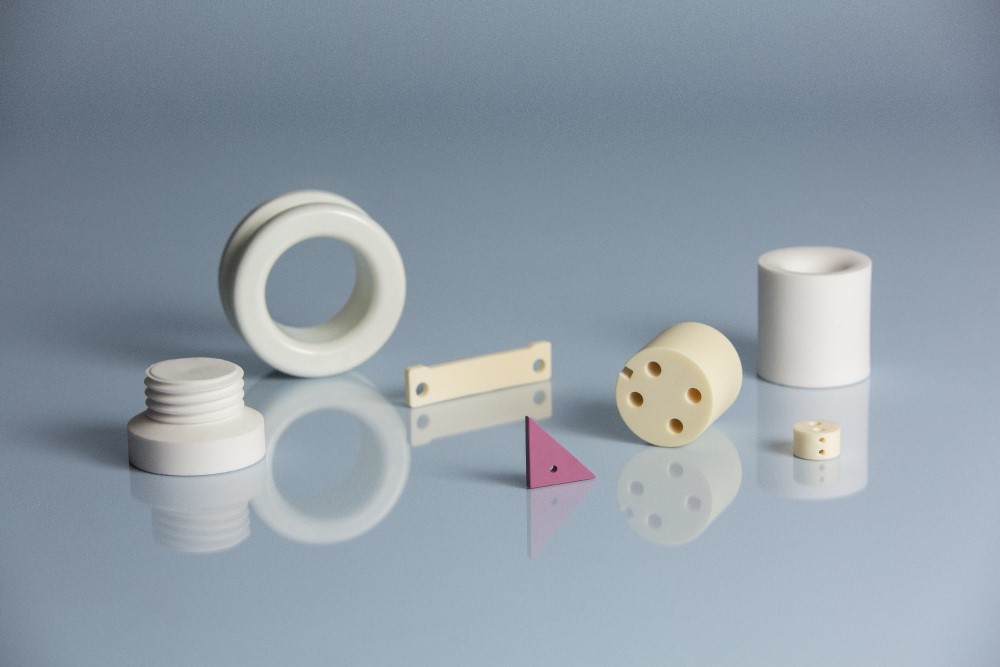Application of Alumina Ceramics

Ceramics are used as biomaterials to fill defects in teeth and bones, fix bone transplants, fractures or prostheses to bones, and replace diseased tissues. They are called bioceramics. They are widely used in the medical field because of their excellent characteristics such as high strength, wear resistance, higher compression and bending strength, and high biocompatibility.
The concept of alumina ceramics covers a wide range. In addition to pure alumina ceramics, any ceramic material with an alumina content of more than 45% can be called alumina ceramics. Alumina ceramics have many isomorphous and heteromorphic crystals, but the most commonly used are only α-Al2O3 and γ-Al2O3. Due to their different crystal structures, they have different properties. Among them, α-Al2O3, also known as corundum, is the main crystal phase of alumina ceramics, with high mechanical strength, high temperature resistance, and corrosion resistance.
Application of Alumina Ceramics in Artificial Joints
High-purity alumina ceramics have a very low friction coefficient, high hardness, and good wettability, making them very suitable for use as joint friction surfaces. Only high-purity alumina can be used in the medical field, and impurities that can form glass grain boundary phases (such as silica, metal silicates, and alkali metal oxides) must be less than 0.1wt%, because the degradation of such impurities will lead to stress concentration sites where cracks will appear. Studies have found that by selecting appropriate sintering parameters (temperature, time, heating/cooling rates) and doping additives (such as magnesium oxide, zirconium oxide, and chromium oxide), the grain size and porosity of alumina can be controlled, and the toughness and fracture strength of alumina can be effectively improved.
Composite materials formed by zirconium oxide and alumina are called zirconium oxide toughened alumina (ZTA) or alumina toughened zirconia (ATZ), which also play an important role in artificial joint materials. These two composite materials depend on the content of the main components. These composite materials combine the toughening ability of zirconium oxide with the low sensitivity of alumina to degradation in low-temperature biological fluids. According to the design requirements of the material, ATZ can be used when high fracture toughness is required, while ZTA can be used when hardness is required. There is no sufficient clinical data to show that ZTA joint bearing surfaces have greater advantages in wear resistance. Studies have shown that the application of ZTA and zirconium oxide-based toughened alumina (ZPTA) in joint surgery is far greater than ATZ.
Application of Alumina Ceramics in Oral Restoration
Alumina ceramics have light transmittance and color that match those of real teeth, and are slightly toxic. Alumina ceramics have significantly low thermal conductivity, which reduces the stimulation of cold and hot foods on the pulp. Zirconia ceramics are resistant to wear, corrosion, and high temperatures, and their color is similar to that of real teeth. They are suitable for tooth restoration and have high strength. According to the physical composition of alumina ceramic materials and the different manufacturing processes, alumina ceramics used in the field of all-ceramic restoration can be divided into the following categories:
(1) Glass infiltration alumina ceramics
Glass infiltration, the full name is slurry coating glass infiltration method. Alumina, as a matrix material, presents a porous structure, and the lanthanum-borosilicate glass containing colorants penetrates into it. After forming, it has a microstructure in which alumina crystal phases and glass crystal phases interpenetrate each other.
(2) High-purity dense sintered all-alumina ceramics
It is composed of alumina with a purity of 99.9%. Alumina powder is pressed into a green body (dry pressing) under great pressure and then sintered. The pressure forming method gives alumina ceramics high density and low porosity.
(3) Glass-infiltrated zirconia toughened alumina ceramics
This type of ceramic is formed by adding 35% partially stabilized zirconia to glass-infiltrated alumina ceramic powder. Evenly distributed tetragonal zirconia can be observed inside the formed material.
With the continuous development of science and technology, alumina bioceramic materials are being used more and more widely in the medical field, and research on them will move towards emerging medical directions with higher added value and more prospects.
